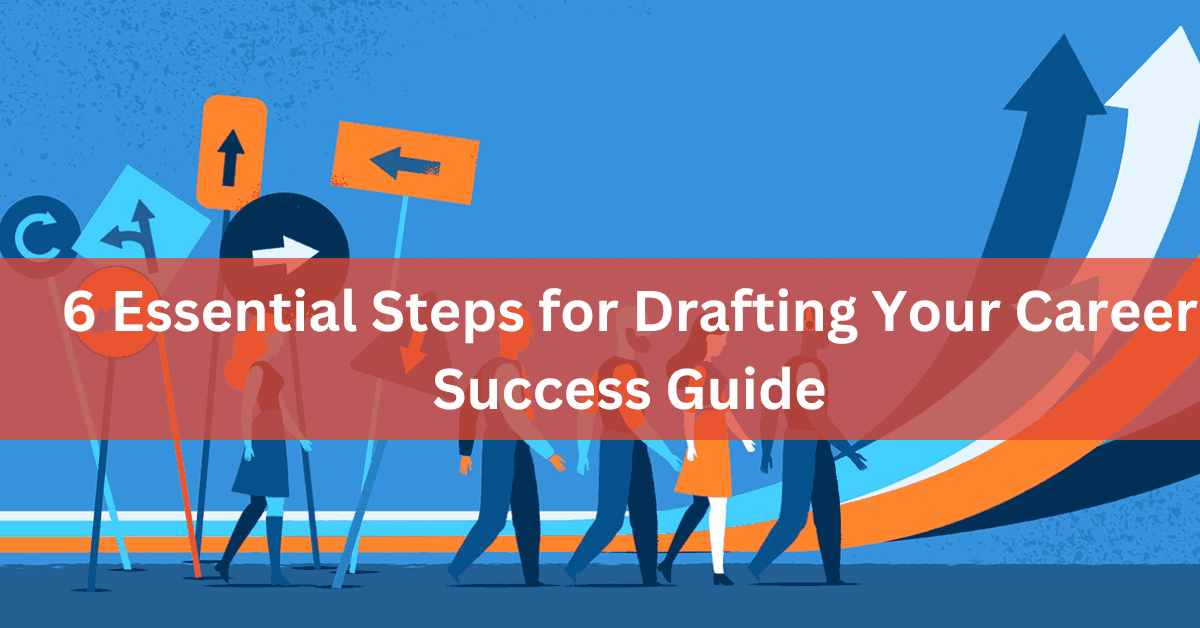6 Essential Steps for Drafting Your Career Success Guide
Navigating your way to a successful career can be challenging but exciting. With the right plan, you can make your journey smoother and more rewarding. This article will go through six critical steps to help you create a career success guide.
Adobe Acrobat says, “The best place to start is to create a career roadmap. A personalized roadmap could help you cultivate potential opportunities for growth, fruitful relationships with peers and mentors, and a sense of work-life balance.”
This guide is your roadmap to achieving your career goals, tailored to your unique skills, interests, and aspirations.
Understanding Your Strengths and Interests
The journey to a successful career begins with a deep understanding of your strengths and interests. Think about what you are naturally good at. Are you a great communicator? Do you have a knack for solving complex problems?
Or perhaps you have a creative flair that sets you apart. Identifying these strengths is the first step. Next, reflect on your interests. Consider the activities that make you lose track of time or the topics you are always eager to learn more about.
Setting Clear Career Goals
After recognizing your strengths and interests, it’s time to set clear career goals. Think about where you want to be in five, ten, or even twenty years. Your goals might include achieving a certain position, working for a specific company, or starting your own business.
Make sure your goals are SMART: Specific, Measurable, Achievable, Relevant, and Time-bound. This framework helps ensure your goals are clear and attainable.
Acquiring the Necessary Skills and Qualifications
With your goals in mind, identify your skills and qualifications to achieve them. This could mean returning to school for a degree, taking online courses to learn a new technology, or earning certifications proving your expertise.
The world is always changing, and industries evolve, so being a lifelong learner is essential. Look for opportunities to grow your skill set, even if it means stepping out of your comfort zone.
Gaining Practical Experience
Theory and study are important, but there’s no substitute for hands-on experience. Look for opportunities to work in your chosen field through internships, volunteer positions, or part-time jobs.
These experiences can teach you valuable skills that you can’t learn from a book. They also give you a taste of your future career, helping you refine your goals and preferences. Plus, practical experience makes your resume stand out to future employers.
Building a Professional Network
Networking isn’t just about collecting contacts; it’s about building relationships with people who can support and guide you in your career. Start by connecting with professionals in your field through social media, industry events, or professional organizations.
Don’t be afraid to contact people whose careers you admire to ask for advice or mentorship. Remember, networking is a two-way street; be ready to help others in your network, too.
Creating a Compelling Resume and Cover Letter
Your resume and cover letter are often your first impressions of potential employers. They should highlight your strengths, experiences, and the unique qualities you bring to the table.
Tailor your resume and cover letter for each job application, emphasizing how your background aligns with the job requirements. Keep your documents concise and focused, and proofread them carefully to avoid any mistakes.
Crafting a career success guide is a proactive step toward achieving your professional dreams.
By understanding your strengths, setting clear goals, continuously learning, gaining practical experience, building a network, crafting compelling application documents, staying flexible, and keeping a positive attitude, you’re laying the foundation for a successful and fulfilling career.
Remember, this guide is not set in stone; it’s a living document that will evolve as you grow. Start drafting your guide today, and take the first step on your path to career success.

